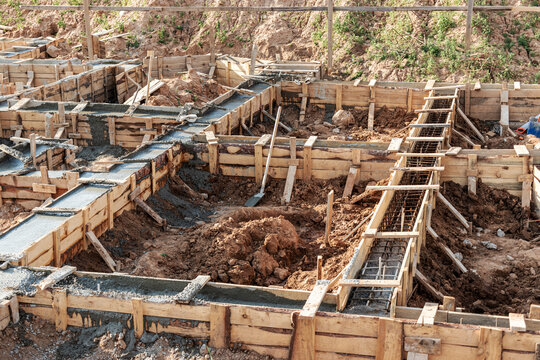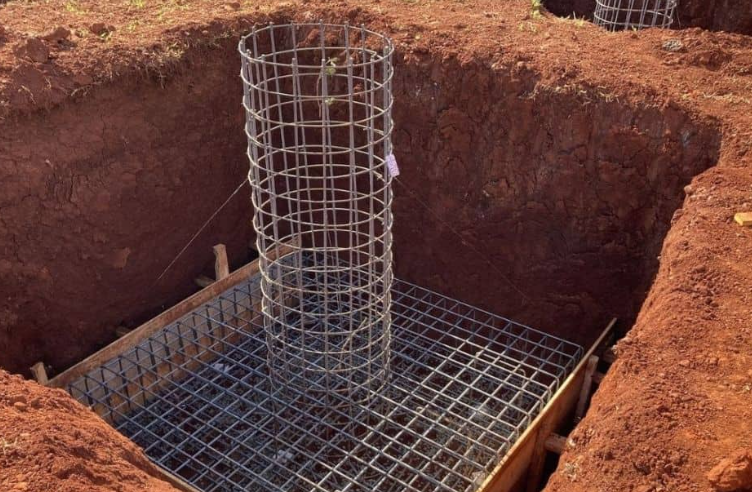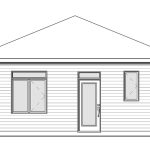If you’ve ever wondered what footing is and where it is found in a construction site, you are on the right page because we’re not going to end this post till you’ve gained a good understanding of what footing is as you read further, you’ll be able to discover surprising places where a footing is used.
What is a Footing?
A Footing in construction is a structural elements built that can be found at the base of a building’s foundation. The function of a construction footing is to help distribute the loads from super structure to the substructure.
Footings can be further described as structural elements that helps provide the needed stability and firmness a building or structure needs in order not to sink.
What is the Nature of Footings?
In construction, most footings are made of reinforced concrete and situated in strategic parts of the structure in order to spread of the building over a larger area and ensure the building remains structurally stable.
What are the Functions of footings?
As described above, the main function of footings used in construction is to transmit safely the loads from the columns, beams and slabs to the base of the building.
Types of footing used in Construction
There are different types of Footings used in construction today.
These includes;
| Type of Footing | Description |
|---|---|
| Continuous Footing | A long, continuous concrete strip footing that supports multiple columns in a row or a wall. |
| Wall Footing | Specifically designed to support the weight of walls, providing a stable base for them. |
| Spread/Isolated Footing | Used for individual columns, such as those supporting beams, walls, or isolated structural elements. |
| Strap Footing | Connects two or more isolated footings, designed to support a load distributed between them. |
| Column Footing | A type of footing that is primarily intended to support individual columns within a building. |
The types of Footing highlighted above is further explained for better understanding below!
1. Continuous footing
What is a Continuous footing?
in construction, a Continuous footing is also known as strip footing and is deployed to provide adequate support for load bearing walls.
This kind of footing is very common in construction sites where the soil is very firm with an appropriate soil bearing capacity.
Continuous footings are strong and durable, easy to install and highly inexpensive to construct.
2. Wall Footing
What is a Wall footing?
while Continuous footings are like strip foundations, a wall footing on the other hand in the form of continuous strip of concrete that is sometimes referred to as a strip footing and is deployed to support load bearing walls.
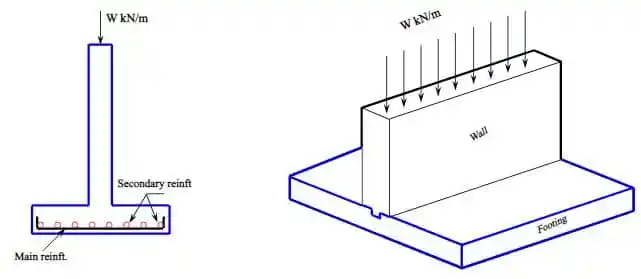
You may come across a wall footing in structures where shallow foundation is used. They are usually rectangular shaped and will be as wide as the wall they support. Personally, I’d say this is the most common type of foundation you’ll find during the construction of small residential houses, office building, schools, etc.
3. Spread/isolated footing
What is a Spread Footing?
After Continuous and Wall footings explained above, we’ll take a look at Spread footing!
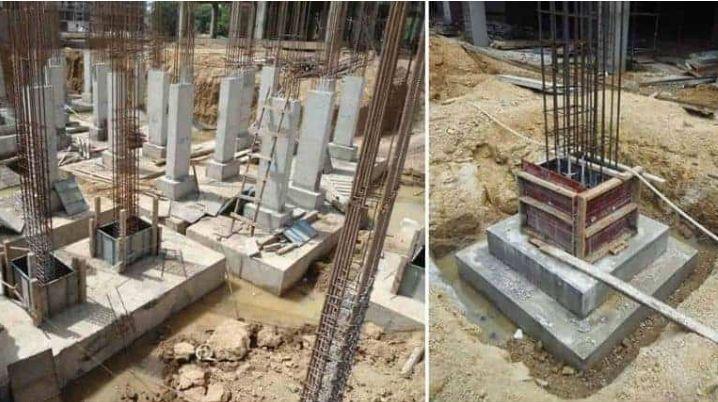
A spread footing is a type deployed to facilitate the distribution of load to specific points in the soil. It is usually of reinforced concrete and isolated when poured individually as illustrated by the image below!
4. Strap Footing
What is a Strap footing?
Whenever 2 or more columns are closely located in a structure, in most cases, you’ll find a strap footing deployed to support them and the connection is not complete without a Strap beam.

One interested benefit of using strap footing to hold 2 or more columns closely located is that it helps keeps the columns stable and prevent sinking into the ground.
5. Column Footing
What is a Column Footing?
A column footing could be square or octagonal in shape and always larger than spread footings in most cases. They are structural elements adopted to supports the spreading of loads of columns over a larger area of soil underneath the structure!
IF you’re observant, you may find column footing in different structures like houses, office buildings, bridges as they’re adopted to prevent the sinking of columns to the ground
Differences between Foundation and footing in Construction
In this section we’re going to present the differences between footings and foundation in a tabular form as we believe this makes it easier to understand and memorize
| Aspect | Foundation | Footing |
|---|---|---|
| Definition | The entire system of structural elements that support and anchor a building to the ground. | A specific component of the foundation responsible for distributing loads to the soil. |
| Components | Includes footings, foundation walls, piers, piles, grade beams, and other structural elements. | Primarily composed of concrete and is located beneath the foundation walls and columns. |
| Function | Distributes the entire load of the building to the soil, providing stability and support. | Spreads the load from walls, columns, and other structural elements over a larger area to prevent settlement. |
| Location | Spans the entire footprint of the building, forming the lowermost part of the structure. | Positioned directly under foundation walls and columns, serving as their base. |
| Types | Different types include shallow foundations (slab, crawl space, and strip foundations) and deep foundations (piles, caissons). | Various types include spread footing, continuous footing, column footing, strap, etc, each suited to specific needs. |
| Depth in the Ground | Can be shallow (close to the surface) or deep (penetrating deep into the soil or bedrock). | Typically placed at a shallower depth compared to foundation walls and other components. |
| Purpose | Provides structural stability and load distribution, and protects the building from external forces like soil pressure and water infiltration. | Mainly designed to prevent excessive settlement and ensure the structural integrity of the building. |
| Comprehensive Structure | Comprises all elements that connect the building to the ground, including the footings. | An individual component within the foundation system, focused on load distribution. |
Before you go!
In Construction, footings are very important as they work in close connection with foundations to help transmit load to specific points beneath the foundation of a building. 5 different types of footings were highlighted and explained and the differences between foundation and footing was also presented in a tabular form to create a much deeper understanding!
It is hoped that this helped you gain a much deeper knowledge than you’d find elsewhere! Remember to help us share with others as this would help keep the world educated too!

